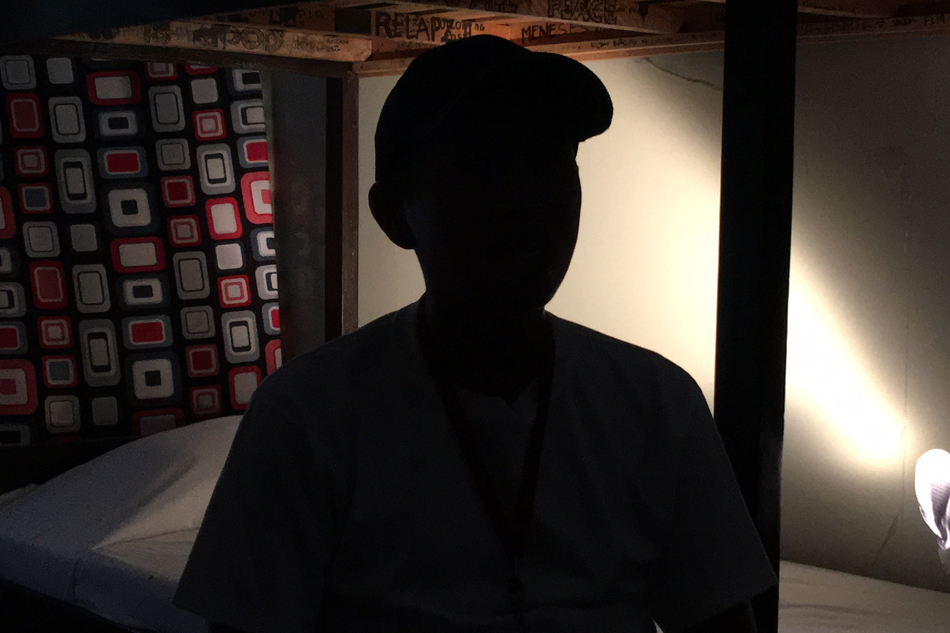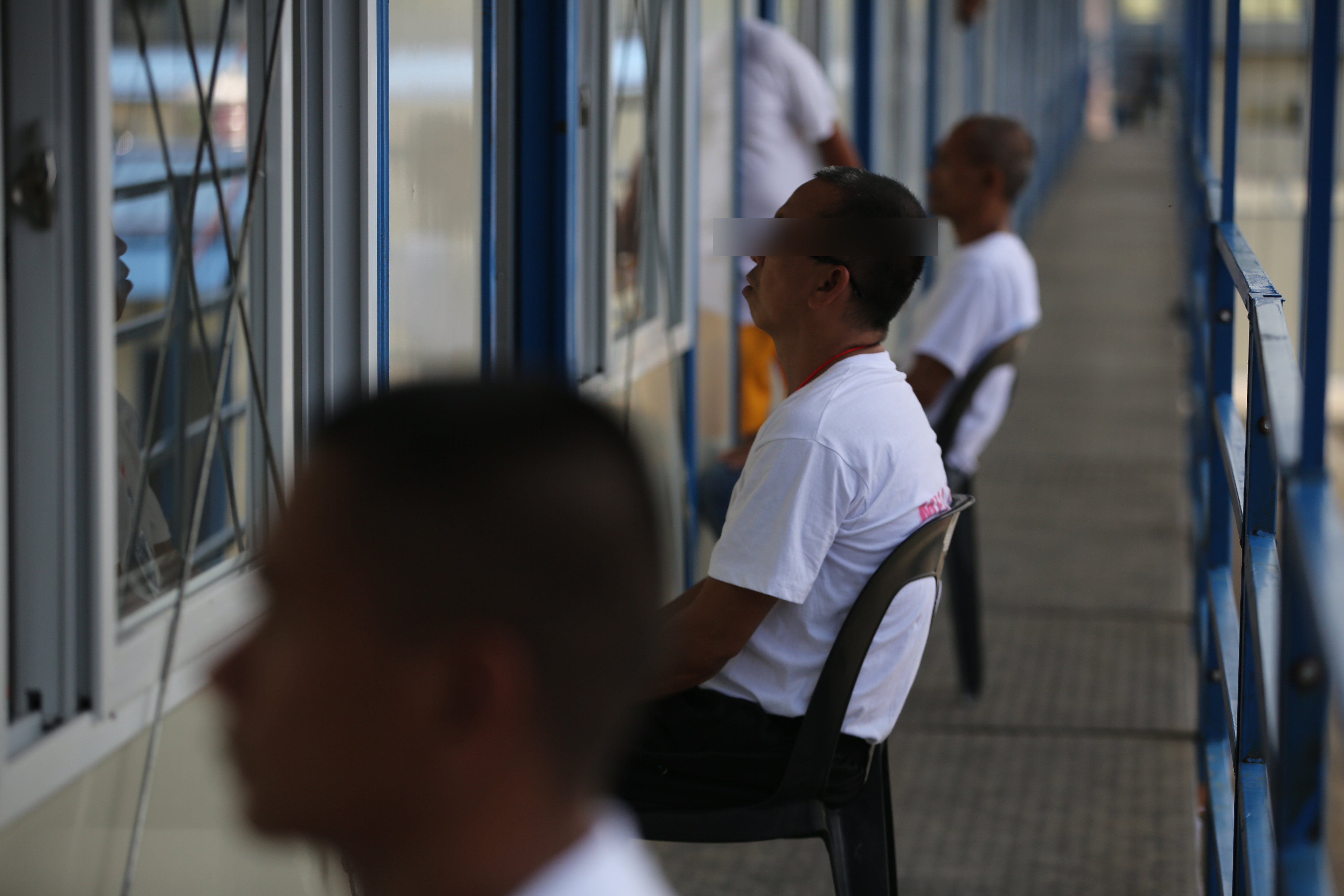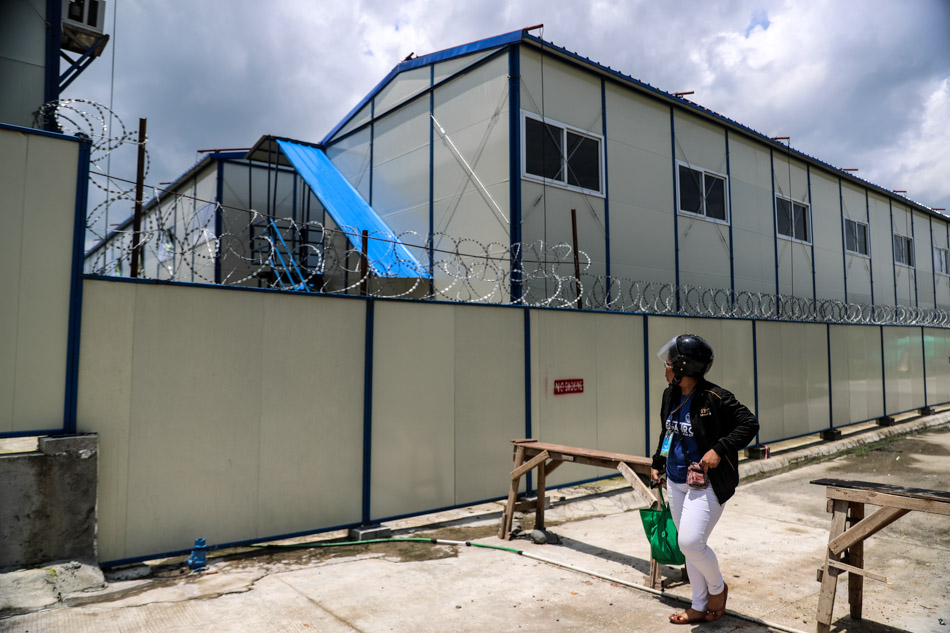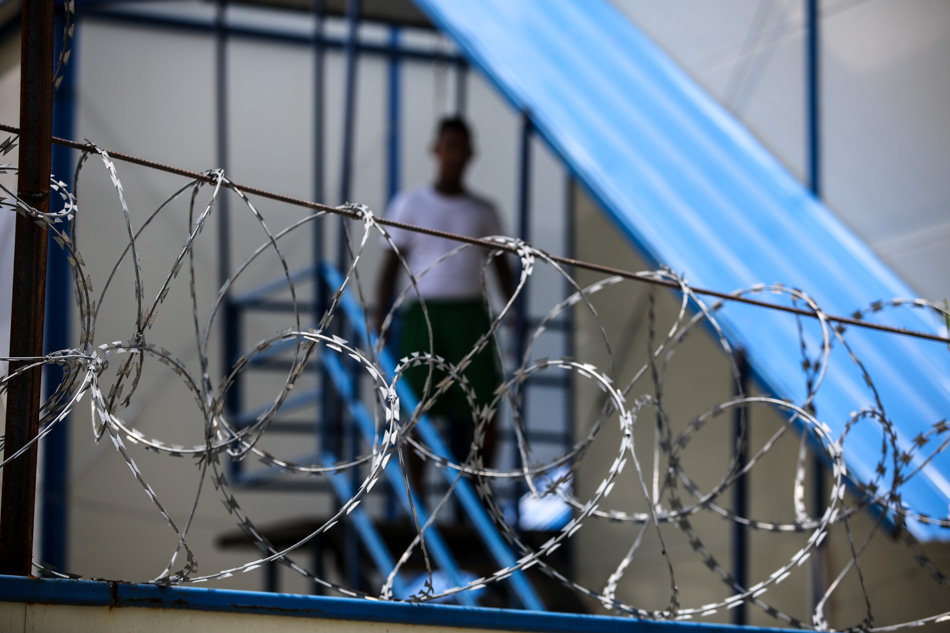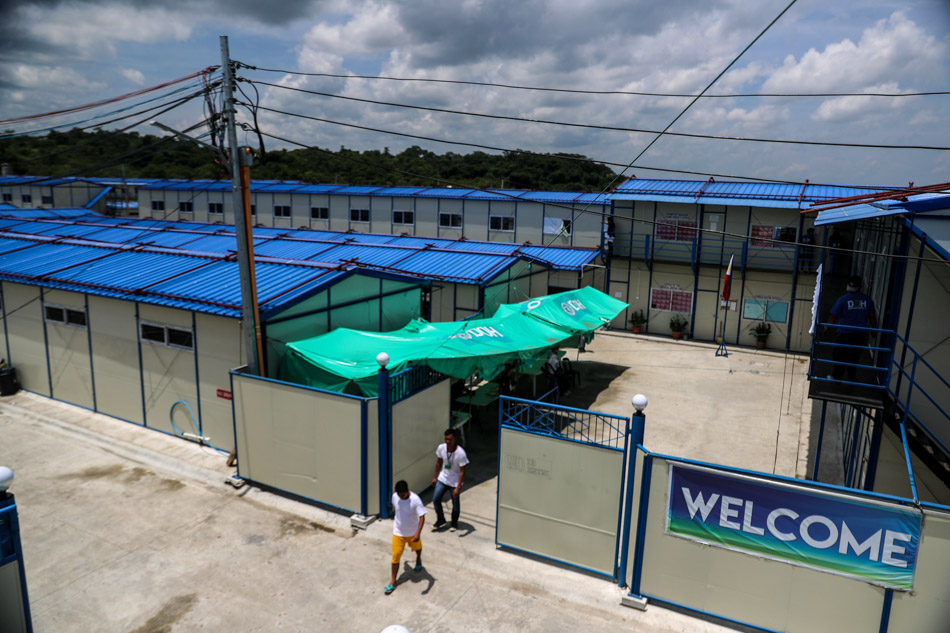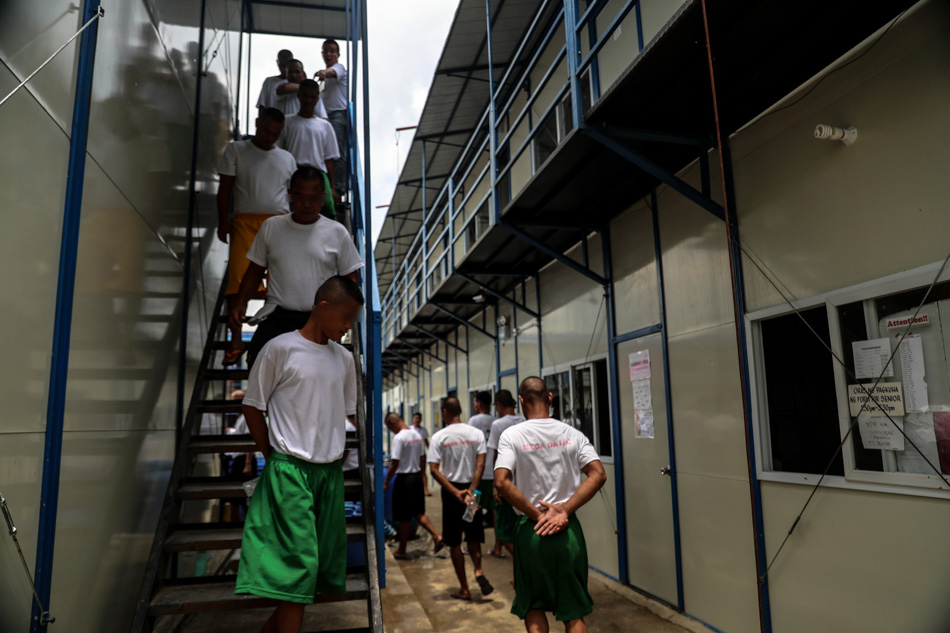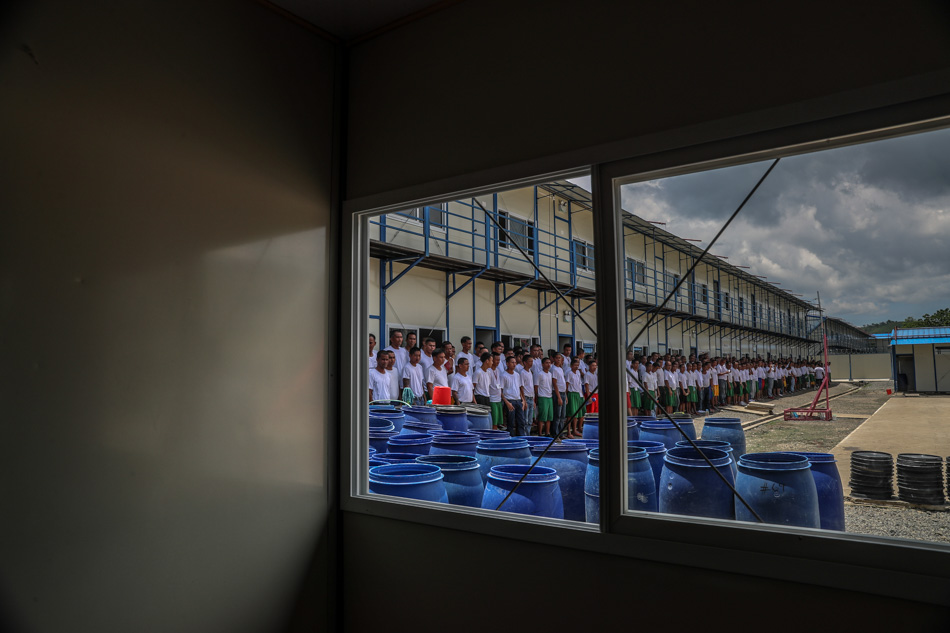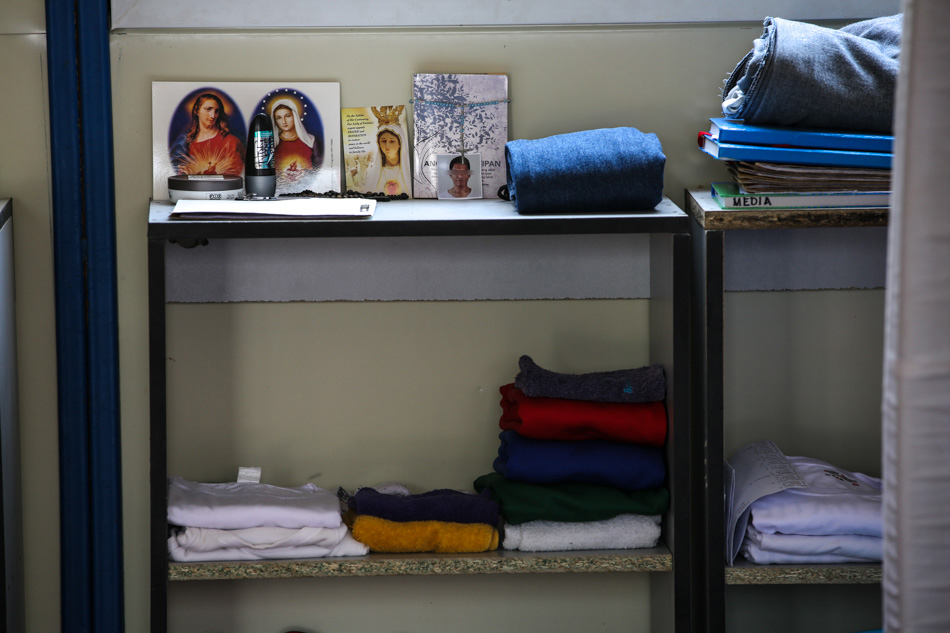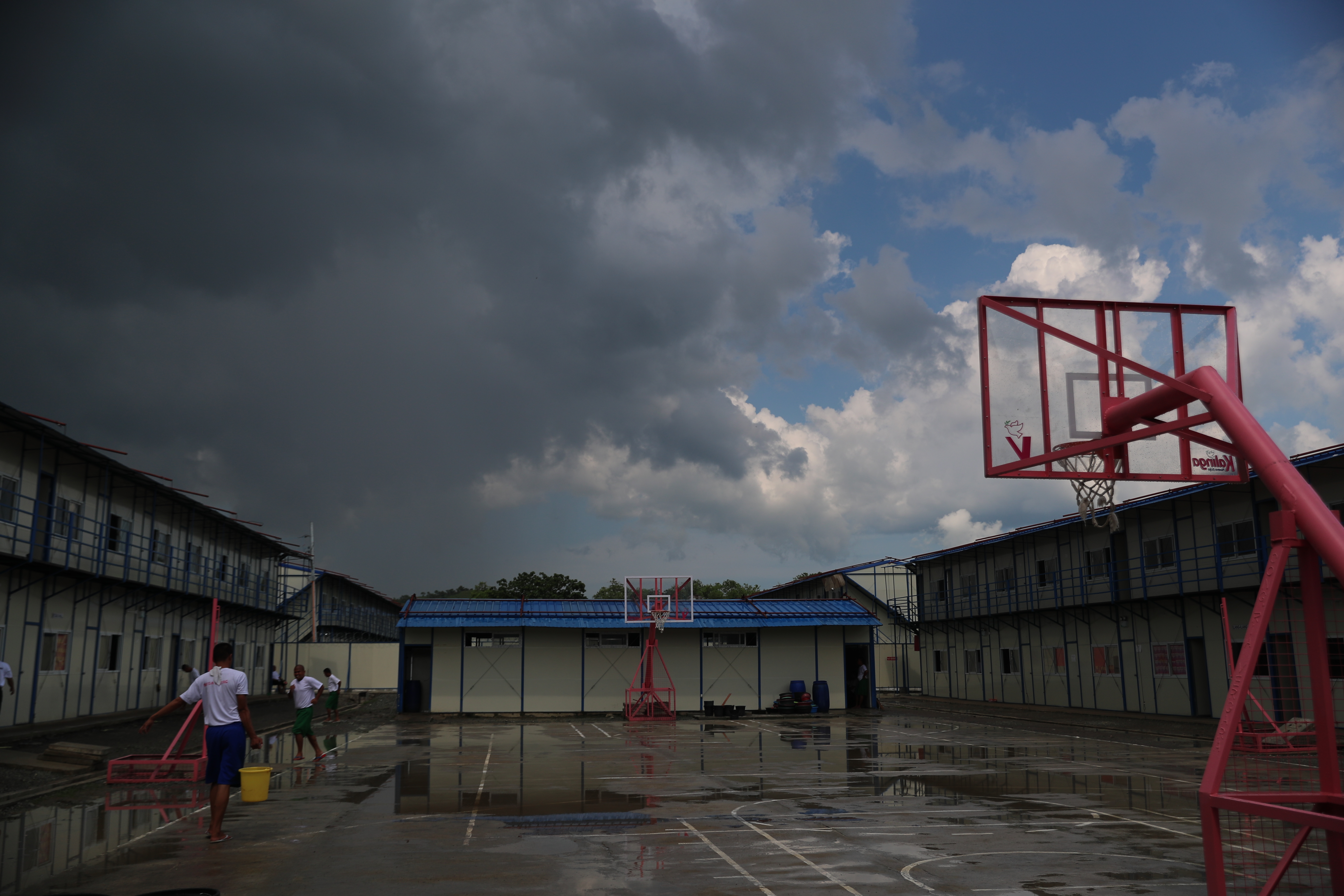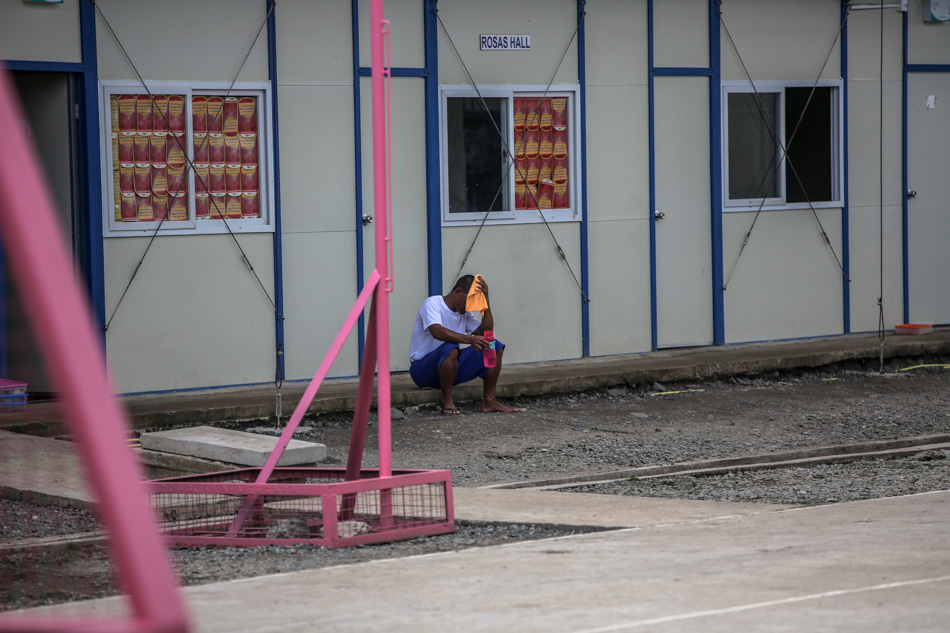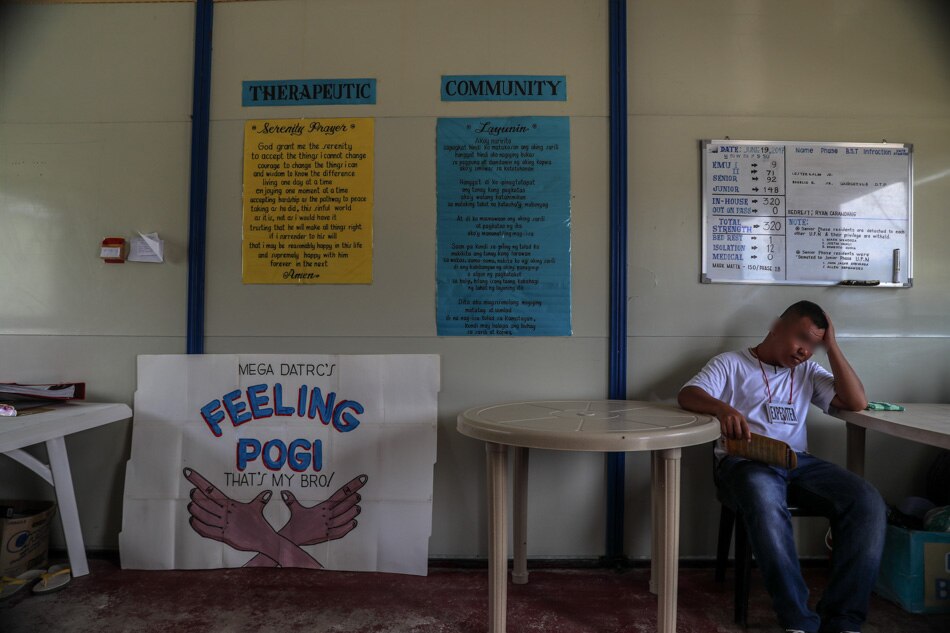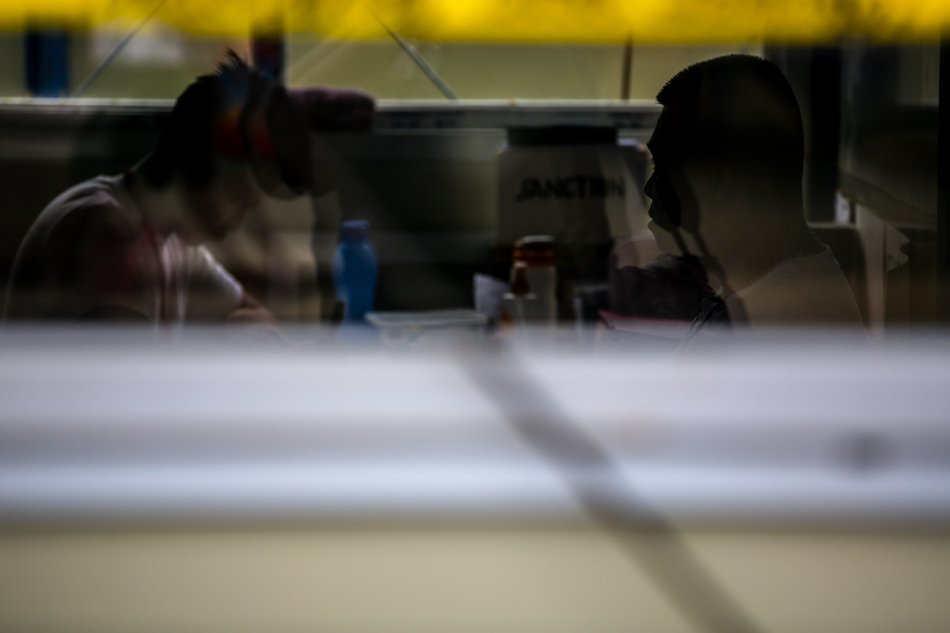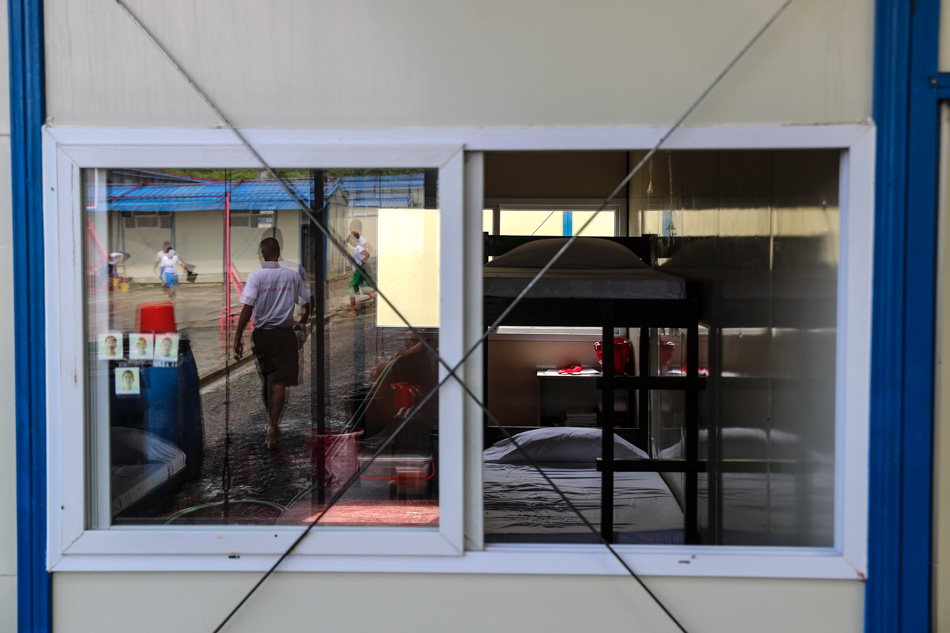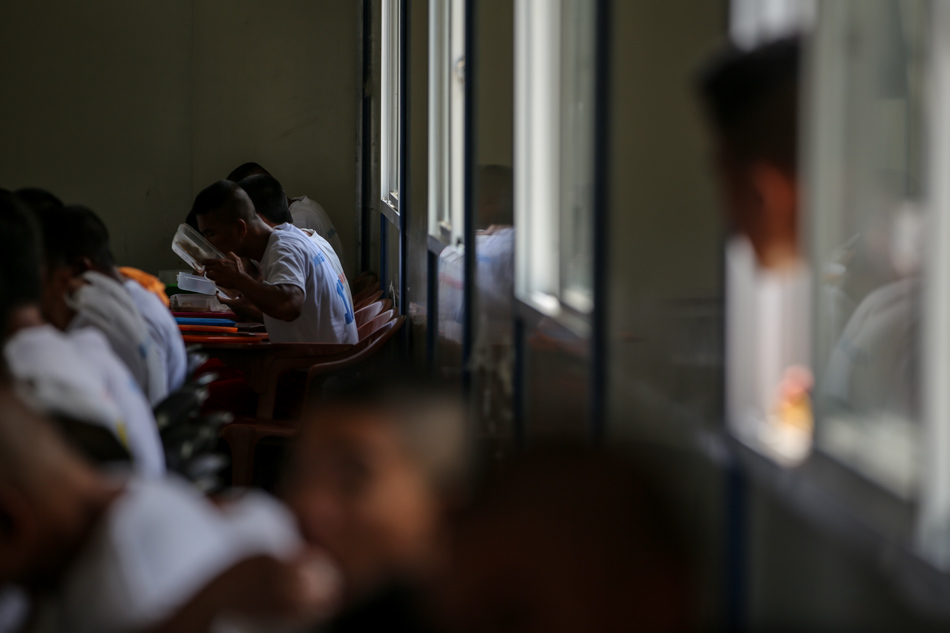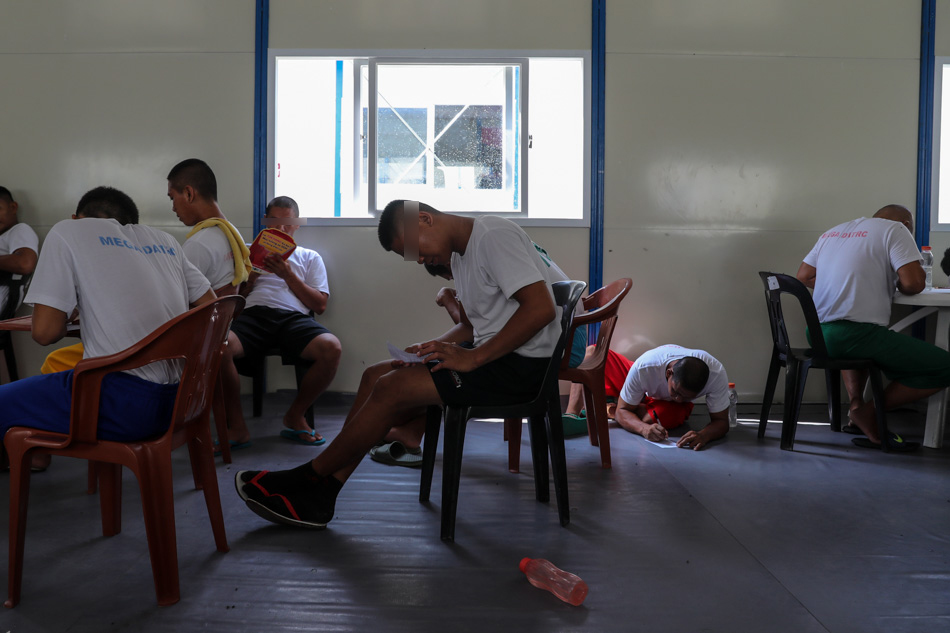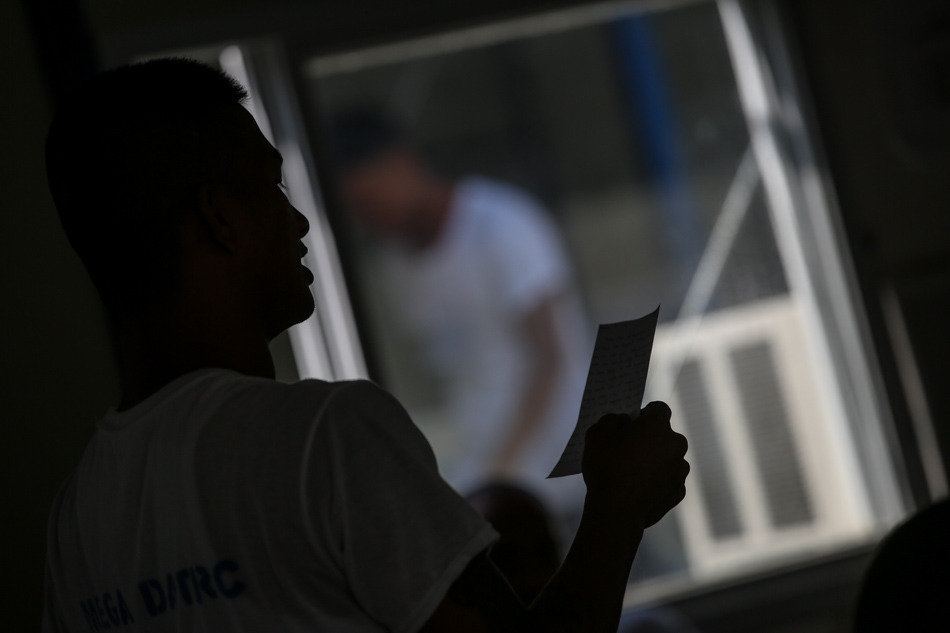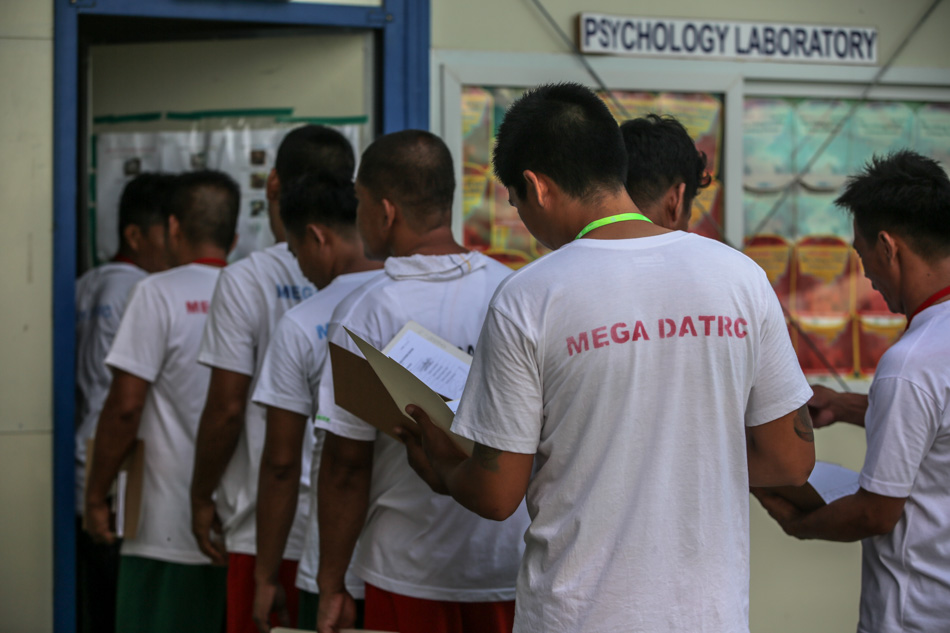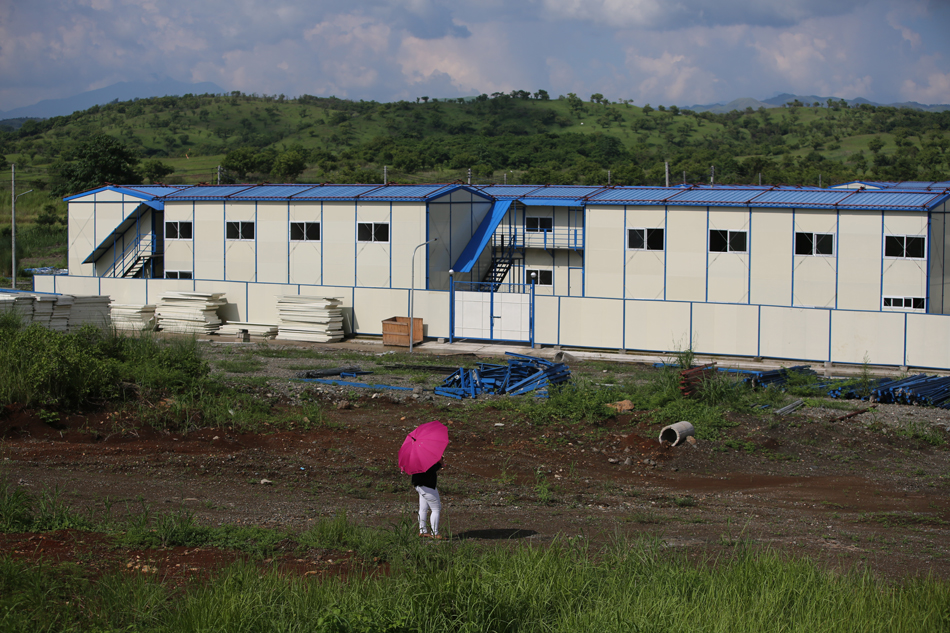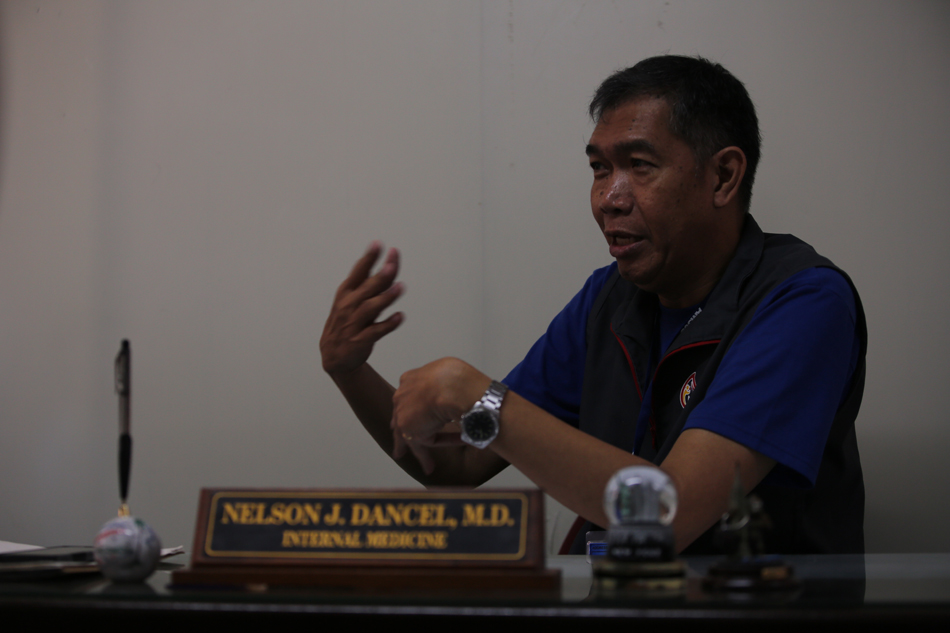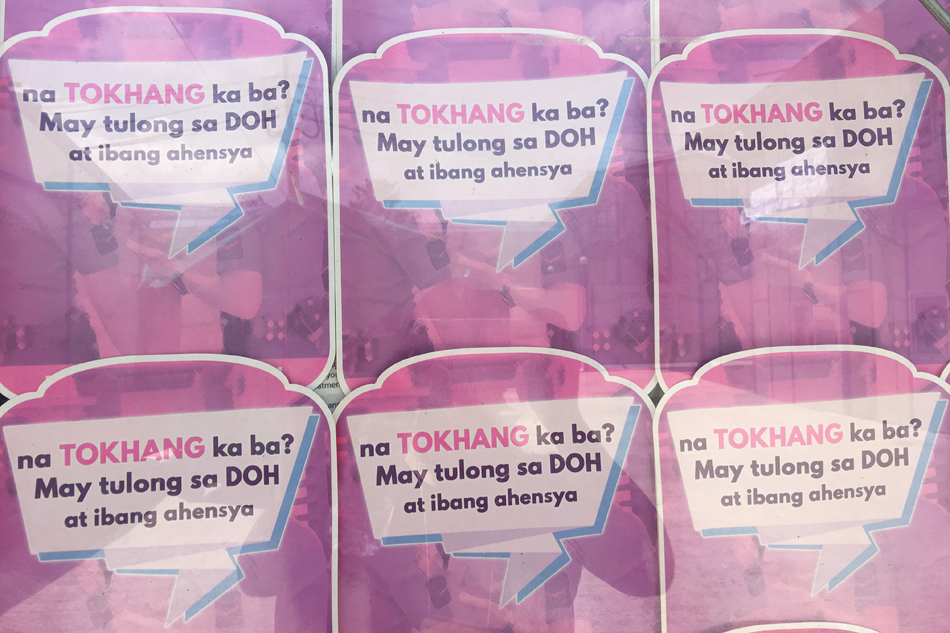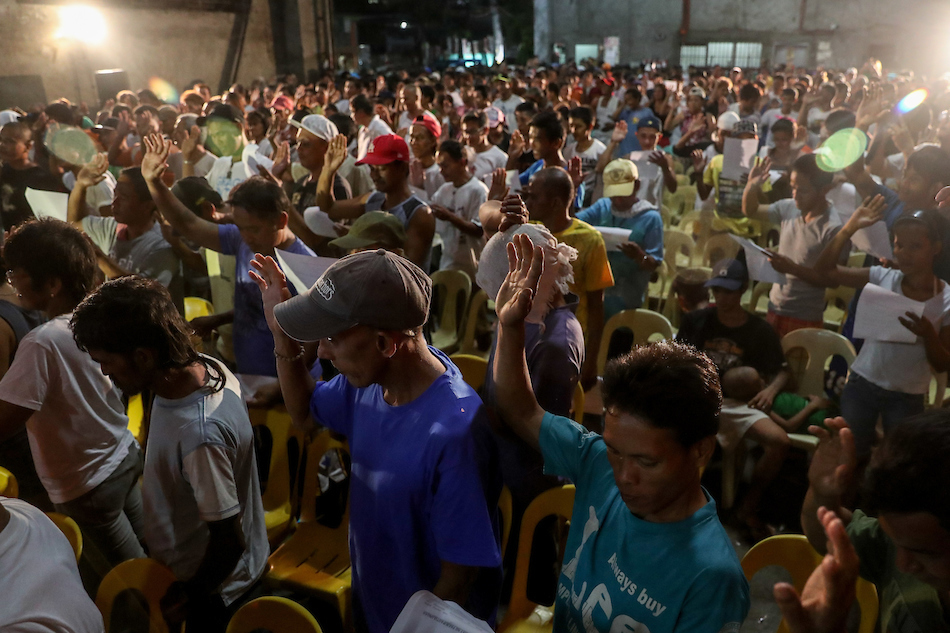Rehab in the time of drug war | ABS-CBN
ADVERTISEMENT

Welcome, Kapamilya! We use cookies to improve your browsing experience. Continuing to use this site means you agree to our use of cookies. Tell me more!
Rehab in the time of drug war
Rehab in the time of drug war
Patrick Quintos,
ABS-CBN News
Published Jun 28, 2017 08:42 AM PHT
|
Updated Jun 28, 2017 11:15 PM PHT
(Third of a series on Year 1 of the Duterte administration)
NUEVA ECIJA - While law enforcement units continue to wage war on drugs on the streets, a different kind of war is happening in a mega drug rehabilitation center inside Fort Magsaysay, a military camp in Central Luzon.
NUEVA ECIJA - While law enforcement units continue to wage war on drugs on the streets, a different kind of war is happening in a mega drug rehabilitation center inside Fort Magsaysay, a military camp in Central Luzon.
This war does not use guns or other weapons. All it needs are will power, determination, motivation, prayers, and most of all, support from family. Inside this 11-hectare lot, the war against addiction is being fought.
This war does not use guns or other weapons. All it needs are will power, determination, motivation, prayers, and most of all, support from family. Inside this 11-hectare lot, the war against addiction is being fought.
Peewee (not his real name), calls this war "fighting the desires of the flesh." He entered the government's Mega Drug Abuse Treatment and Rehabilitation Center (Mega DATRC) in February 2017. This is his second rehab.
Peewee (not his real name), calls this war "fighting the desires of the flesh." He entered the government's Mega Drug Abuse Treatment and Rehabilitation Center (Mega DATRC) in February 2017. This is his second rehab.
The 35-year-old admitted he has lived almost half of his life to drug addiction. He neglected his family and gave up a once-promising career and a bright future ahead for shabu, a cheap form of methamphetamine usually sold in sachets illegally on the streets.
The 35-year-old admitted he has lived almost half of his life to drug addiction. He neglected his family and gave up a once-promising career and a bright future ahead for shabu, a cheap form of methamphetamine usually sold in sachets illegally on the streets.
ADVERTISEMENT
Addiction kept him occupied for a long time, and one day, he woke up to the hard reality that he'd been left by his wife and almost totally alienated from his three kids.
Addiction kept him occupied for a long time, and one day, he woke up to the hard reality that he'd been left by his wife and almost totally alienated from his three kids.
"Natakot ako nung nawala lahat ng pamilya ko. Natakot ako dahil 'yung mga anak ko baka mamaya hindi na nila ako kilala," he told an ABS-CBN News team who was allowed to document what happens inside the country's first mega drug rehab facility.
"Natakot ako nung nawala lahat ng pamilya ko. Natakot ako dahil 'yung mga anak ko baka mamaya hindi na nila ako kilala," he told an ABS-CBN News team who was allowed to document what happens inside the country's first mega drug rehab facility.
INSIDE THE 'MEGA' REHAB FACILITY
When Peewee entered Mega DATRC, he went through a process every newly admitted resident undergoes -- the emotional and motivational unit (EMU) phase.
When Peewee entered Mega DATRC, he went through a process every newly admitted resident undergoes -- the emotional and motivational unit (EMU) phase.
In this phase, a resident is not yet allowed to join or even talk with the others for up to a month, depending on his or her performance. He or she is made to observe the activities and read house rules.
In this phase, a resident is not yet allowed to join or even talk with the others for up to a month, depending on his or her performance. He or she is made to observe the activities and read house rules.
After the EMU, a resident graduates to the junior phase. If he passes this, he or she eventually moves to the senior phase. In these phases, a resident is given daily tasks to improve his or her awareness, something that years of drug use takes away from a person.
After the EMU, a resident graduates to the junior phase. If he passes this, he or she eventually moves to the senior phase. In these phases, a resident is given daily tasks to improve his or her awareness, something that years of drug use takes away from a person.
Pewee is already in his senior phase of the Mega DATRC's program. He's been promoted to shingle expediter, the second-in-command of the chief expediter. Outstanding residents like him are given added leadership duties.
Pewee is already in his senior phase of the Mega DATRC's program. He's been promoted to shingle expediter, the second-in-command of the chief expediter. Outstanding residents like him are given added leadership duties.
If he does well in the senior phase, he'll proceed to an 18-month after-care program, the start of his integration back to society. What pushes him to overcoming this challenge is family.
If he does well in the senior phase, he'll proceed to an 18-month after-care program, the start of his integration back to society. What pushes him to overcoming this challenge is family.
"I want to win back my family. I want to win back my wife. So, gusto kong mabalik sila. Through 'yung war against drugs, siguro tinulungan ko na rin 'yung sarili ko na makipaglaban sa pita ng laman," he said, lwhen asked about his motivation.
"I want to win back my family. I want to win back my wife. So, gusto kong mabalik sila. Through 'yung war against drugs, siguro tinulungan ko na rin 'yung sarili ko na makipaglaban sa pita ng laman," he said, lwhen asked about his motivation.
Peewee, who graduated college with a Bachelor of Science in commerce in 2002, also said he wants to take another course so he can return to the rehab facility and help recovering addicts find their way back to society.
Peewee, who graduated college with a Bachelor of Science in commerce in 2002, also said he wants to take another course so he can return to the rehab facility and help recovering addicts find their way back to society.
10,000-BED CAPACITY, ONLY 300+ RESIDENTS
From July 2016 to May 2017, there were at least 1.3 million drug users like Peewee who surrendered under the Duterte administration's Oplan Tokhang, government data show.
From July 2016 to May 2017, there were at least 1.3 million drug users like Peewee who surrendered under the Duterte administration's Oplan Tokhang, government data show.
This is not even half of the President Duterte's estimate of around 4 million drug addicts nationwide. A Dangerous Drugs Board (DDB) survey in 2015, however, had a lower figure of 1.8 million drug users.
This is not even half of the President Duterte's estimate of around 4 million drug addicts nationwide. A Dangerous Drugs Board (DDB) survey in 2015, however, had a lower figure of 1.8 million drug users.
The Mega DATRC, which has a maximum 10,000-bed capacity, was seen to help a lot of these surrenderers. But 7 months after its inauguration, there were only 311 residents in the first phase of the facility -- only 3% of its full capacity.
The Mega DATRC, which has a maximum 10,000-bed capacity, was seen to help a lot of these surrenderers. But 7 months after its inauguration, there were only 311 residents in the first phase of the facility -- only 3% of its full capacity.
All Mega DATRC residents are males. Most of them are unemployed men in their early 30s. Proximity matters, as data show most of the facility's residents are from Central Luzon and nearby areas.
All Mega DATRC residents are males. Most of them are unemployed men in their early 30s. Proximity matters, as data show most of the facility's residents are from Central Luzon and nearby areas.
"'Yun ang one of the factors nga siguro kaya kaunti ang nadadalang residents dito kasi nga malayo," said Dr. Nelson Dancel, a retired colonel who is now the officer in-charge of the Mega DATRC.
"'Yun ang one of the factors nga siguro kaya kaunti ang nadadalang residents dito kasi nga malayo," said Dr. Nelson Dancel, a retired colonel who is now the officer in-charge of the Mega DATRC.
But more than proximity, Dr. Dancel said one of the reasons for the low admission is the fact that not all drug surrenderers are in need of in-house treatment.
But more than proximity, Dr. Dancel said one of the reasons for the low admission is the fact that not all drug surrenderers are in need of in-house treatment.
After surrendering, Dancel explained, a drug user is first assessed by a Department of Health-accredited physician if he or she needs in-house or community-based treatment.
After surrendering, Dancel explained, a drug user is first assessed by a Department of Health-accredited physician if he or she needs in-house or community-based treatment.
The surrenderer will then have to file a petition for confinement before a Regional Trial Court (RTC). He or she must not have any pending case in court so he or she can be granted a court order.
The surrenderer will then have to file a petition for confinement before a Regional Trial Court (RTC). He or she must not have any pending case in court so he or she can be granted a court order.
In a bid to maximize the the use of the Mega DATRC, the Supreme Court last June 6, upon the request of the Department of the Interior and Local Government, ordered RTC judges to refer drug dependents to the Nueva Ecija facility.
In a bid to maximize the the use of the Mega DATRC, the Supreme Court last June 6, upon the request of the Department of the Interior and Local Government, ordered RTC judges to refer drug dependents to the Nueva Ecija facility.
'MEGA' NO MORE?
According to Health Secretary Secretary Paulyn Jean Ubial, based on the department's experience in handling drug abuse and treatment facilities, only 1% of the total number of drug dependents usually need in-patient care.
According to Health Secretary Secretary Paulyn Jean Ubial, based on the department's experience in handling drug abuse and treatment facilities, only 1% of the total number of drug dependents usually need in-patient care.
"We don't force the issue. If the physician thinks that the patient does not need in-patient care, it’s not as if we need to fill up all the beds or all the cells. The lesser the inmates or the inpatients, the better. Kasi ibig sabihin nun, hindi sila severe," she said.
"We don't force the issue. If the physician thinks that the patient does not need in-patient care, it’s not as if we need to fill up all the beds or all the cells. The lesser the inmates or the inpatients, the better. Kasi ibig sabihin nun, hindi sila severe," she said.
Ubial said the ideal number of residents in a drug rehab facility, in order for the program to be effective, is around 500 for every 100 health workers.
Ubial said the ideal number of residents in a drug rehab facility, in order for the program to be effective, is around 500 for every 100 health workers.
Right now, there are around 200 health and social workers at the Mega DATRC. The ideal number of 500 residents for phase 1 has not been reached yet.
Right now, there are around 200 health and social workers at the Mega DATRC. The ideal number of 500 residents for phase 1 has not been reached yet.
Ubial said the Inter-agency Committee on Anti-illegal Drugs (ICAD) will open other portions of the Mega DATRC once the active section of phase 1 reaches its 500-resident threshold.
Ubial said the Inter-agency Committee on Anti-illegal Drugs (ICAD) will open other portions of the Mega DATRC once the active section of phase 1 reaches its 500-resident threshold.
"Ang balak namin, hatiin 'yan, na 500 per section. Sa ngayon, di pa natin naabot yung 500. 'Yung inaano namin, tapusin muna 'yung 500, saka idi-divide siya pag may another na ulit," she said.
"Ang balak namin, hatiin 'yan, na 500 per section. Sa ngayon, di pa natin naabot yung 500. 'Yung inaano namin, tapusin muna 'yung 500, saka idi-divide siya pag may another na ulit," she said.
Ubial said they look at mega rehab facilities as a "stop-gap solution" in case there's a high volume of drug surrenderers. Ultimately, she said, the long-term solution is building at least one 100-bed drug rehab facility per region.
Ubial said they look at mega rehab facilities as a "stop-gap solution" in case there's a high volume of drug surrenderers. Ultimately, she said, the long-term solution is building at least one 100-bed drug rehab facility per region.
"Nung sinabi ng Chinese [billionaire Huang Rulun] na magdo-donate siya ng 10,000 beds, lahat kami sa ICAD, 'yung inter-agency committee, was apprehensive na na parang ayaw namin. Gusto namin i-downsize na," she said.
"Nung sinabi ng Chinese [billionaire Huang Rulun] na magdo-donate siya ng 10,000 beds, lahat kami sa ICAD, 'yung inter-agency committee, was apprehensive na na parang ayaw namin. Gusto namin i-downsize na," she said.
"Pero 'yun kasi 'yung parang naisip niyang i-donate... 'Yun ang gusto niyang i-donate e who are we to refuse. So, tinanggap namin 'yun. Pero hindi tayo parang gagawa ng paraan o magdadasal para mapuno 'yung 10,000 na 'yun," Ubial added.
"Pero 'yun kasi 'yung parang naisip niyang i-donate... 'Yun ang gusto niyang i-donate e who are we to refuse. So, tinanggap namin 'yun. Pero hindi tayo parang gagawa ng paraan o magdadasal para mapuno 'yung 10,000 na 'yun," Ubial added.
She said they are currently studying if it is possible to eventually transform the mega drug treatment and rehab facilities into different types of medical facilities.
She said they are currently studying if it is possible to eventually transform the mega drug treatment and rehab facilities into different types of medical facilities.
There are a total of 45 DOH-accredited drug treatment and rehab facilities, with a total of 3,334 bed capacity, for in-house patients nationwide, as of December 2016, according to the Health Department. Mos of these facilities are not run by the government.
There are a total of 45 DOH-accredited drug treatment and rehab facilities, with a total of 3,334 bed capacity, for in-house patients nationwide, as of December 2016, according to the Health Department. Mos of these facilities are not run by the government.
WHERE ARE THE 'OUT-PATIENTS'?
In a forum last June 21, Ubial presented data which show that from July 2016 to May 2017, only 1,643 were admitted to in-house rehab care, while 865 were assessed as out-patients.
In a forum last June 21, Ubial presented data which show that from July 2016 to May 2017, only 1,643 were admitted to in-house rehab care, while 865 were assessed as out-patients.
This is just a small percentage of the estimated 1.3 million drug users nationwide who surrendered during the same period.
This is just a small percentage of the estimated 1.3 million drug users nationwide who surrendered during the same period.
Asked if all the other surrenderers were already assessed by DOH-accredited physicians, Ubial said the department is still collecting data from local governments.
Asked if all the other surrenderers were already assessed by DOH-accredited physicians, Ubial said the department is still collecting data from local governments.
"We don’t have that data... Because majority are LGU data. So we’re trying to get that from the local government," she said.
"We don’t have that data... Because majority are LGU data. So we’re trying to get that from the local government," she said.
Ubial assured that the DOH is continuously training health workers who can assesses drug dependents to boost the capability of local government units.
Ubial assured that the DOH is continuously training health workers who can assesses drug dependents to boost the capability of local government units.
So far, she said, the DOH has been able to train 266 physicians across the country who can help local governments assess drug surrenderers.
So far, she said, the DOH has been able to train 266 physicians across the country who can help local governments assess drug surrenderers.
The ICAD is also collecting data on the progress of barangay community-based rehab centers, according to Ubial. These should be able to accommodate mild and moderate drug users, she added.
The ICAD is also collecting data on the progress of barangay community-based rehab centers, according to Ubial. These should be able to accommodate mild and moderate drug users, she added.
While some of those who surrendered under Oplan Tokhang, like Peewee, have received helped from the government in their bid to recover from addiction, some are not so lucky.
While some of those who surrendered under Oplan Tokhang, like Peewee, have received helped from the government in their bid to recover from addiction, some are not so lucky.
There have been reports of some Oplan Tokhang surrenderers relapsing and being subjects of police buy-bust operations; others have been gunned down by vigilantes.
There have been reports of some Oplan Tokhang surrenderers relapsing and being subjects of police buy-bust operations; others have been gunned down by vigilantes.
Data from the Philippine National Police show at least 1,847 drug-related killings recorded from July 2016 to March 2017. This figure is 19.6 percent of the total 9,432 homicide cases recorded under the Duterte administration.
Data from the Philippine National Police show at least 1,847 drug-related killings recorded from July 2016 to March 2017. This figure is 19.6 percent of the total 9,432 homicide cases recorded under the Duterte administration.
Police, however, have yet to determine the motive behind 60% of all these homicide cases (around 5,600), which are filed as deaths under investigation.
Police, however, have yet to determine the motive behind 60% of all these homicide cases (around 5,600), which are filed as deaths under investigation.
"Investigations take time. We have to hear witnesses, conduct forensic examinations. We have to know what really happened," said Chief Supt. Augusto Marquez, PNP Director for Investigation and Detective Management.
"Investigations take time. We have to hear witnesses, conduct forensic examinations. We have to know what really happened," said Chief Supt. Augusto Marquez, PNP Director for Investigation and Detective Management.
'MORE WORK NEEDED IN REHAB EFFORTS'
The government's effort to integrate drug treatment and rehabilitation in its war on drugs is most welcome but more work needs to be done, according to NoBox Transitions Foundation, a health-based drug policy approach advocacy group
The government's effort to integrate drug treatment and rehabilitation in its war on drugs is most welcome but more work needs to be done, according to NoBox Transitions Foundation, a health-based drug policy approach advocacy group
Ma. Inez Feria, founder and director of NoBox Transitions, said the ICAD should have studied the mega drug rehab proposal first before it was constructed.
Ma. Inez Feria, founder and director of NoBox Transitions, said the ICAD should have studied the mega drug rehab proposal first before it was constructed.
"To accept resources to build a mega rehab means that you agreed with the premise of constructing a mega rehab. But if you’re gonna take it back now, babawiin mo siya a few months after, that just tells us na hindi siya napag-aralan," she said.
"To accept resources to build a mega rehab means that you agreed with the premise of constructing a mega rehab. But if you’re gonna take it back now, babawiin mo siya a few months after, that just tells us na hindi siya napag-aralan," she said.
Feria said it is good that the government is now talking about the need for community-based rehab programs, as global statistics show most drug users do not really need in-house treatment.
Feria said it is good that the government is now talking about the need for community-based rehab programs, as global statistics show most drug users do not really need in-house treatment.
The challenge for the government now, she said, is to provide a much clearer picture of a community-based drug rehab program.
The challenge for the government now, she said, is to provide a much clearer picture of a community-based drug rehab program.
"What does that look like? How is it supposed to look like? And right now that’s not very clear. And that’s understandable because we never had that before. It was either just, pag gumagamit ka, rehab ka or you end up in jail," she said.
"What does that look like? How is it supposed to look like? And right now that’s not very clear. And that’s understandable because we never had that before. It was either just, pag gumagamit ka, rehab ka or you end up in jail," she said.
Another challenge, Feria said, is the life of a recovering drug addict after the government's rehab program. She said even if there is an after-care module, external factors like the environment will have an influence on a person.
Another challenge, Feria said, is the life of a recovering drug addict after the government's rehab program. She said even if there is an after-care module, external factors like the environment will have an influence on a person.
"It’s such an opportunity to be able to put responses and systems in place that will truly be helpful in ways which will be sustainable…Drug use is not black and white; it has a lot of nuances, there are things we need to understand. [If we accept this,] then it would be a better society," she said.
"It’s such an opportunity to be able to put responses and systems in place that will truly be helpful in ways which will be sustainable…Drug use is not black and white; it has a lot of nuances, there are things we need to understand. [If we accept this,] then it would be a better society," she said.
(With reports from Mike Navallo and Miguel Dumaual of ABS-CBN News, and Juni Gonzales of the ABS-CBN Investigative and Research Group)
ADVERTISEMENT
ADVERTISEMENT




